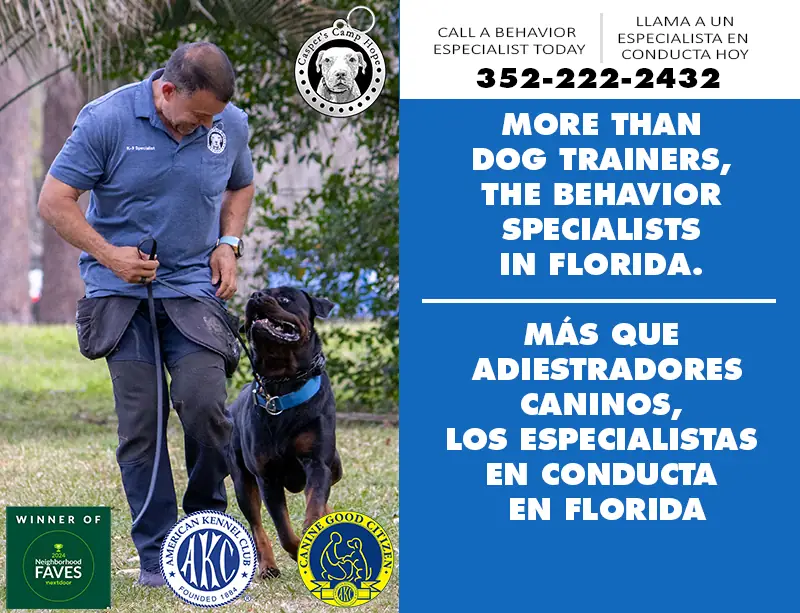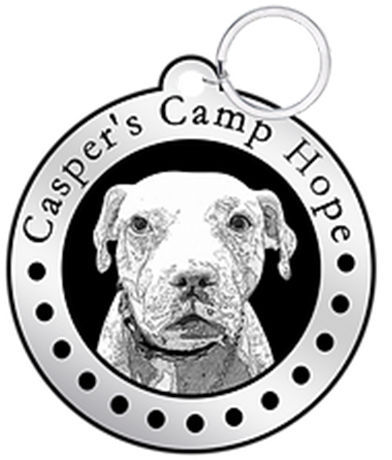Even the friendliest pups in Gainesville can get stubborn or reactive. It’s not about being harsh—it’s about providing clear, consistent boundaries. Dogs thrive when they know what’s expected. Don’t let your dog “win” those little standoffs. Stay calm and stick to your expectations. Dog training advice for happy dogs and great relationships.
**Success Story:** A Millhopper family came to us with a leash reactive dog. After four weeks of leash reactivity dog training and behavior modification, their walks through University Park became calm and enjoyable. Their dog even started attending dog daycare Gainesville FL!
At Casper’s Camp Hope Dog Training, the behavior specialists in Gainesville Florida, we specialize in: Leash reactive dog training Leash reactivity dog training Dog behavior modification Separation anxiety dog training And behavior-aware dog daycare and boarding support
Leash reactivity is one of the top reasons people reach out for dog training and dog behavior modification at Casper’s Camp Hope in Gainesville. And it’s not just here—families from all over Alachua County and nearby cities like Alachua, Newberry, High Springs, and Ocala, Florida are dealing with the same thing.
Gainesville, Florida is a dog lover’s town—parks, trails, patios, and plenty of places to explore with your pup. But if your dog is reactive or aggressive, those fun spots can feel completely off-limits. That’s where behavior-focused dog training comes in. At Casper’s Camp Hope, we help families across Gainesville, Alachua County, and Ocala turn chaos into calm with a blend of dog training, dog daycare, and dog boarding designed for real life.
If you live in Gainesville, Alachua, Newberry, High Springs, or even Ocala, you’ve probably noticed something: this area is full of dogs…and full of distractions. That’s great—until your dog is dragging you down the sidewalk, barking at everything that moves, or acting like a totally different animal once the leash goes on. That’s where professional dog training and dog behavior modification come in. At Casper’s Camp Hope, we focus on real-world dog training Florida families can actually use, especially for leash reactive dogs and aggressive behavior
Dog parks can be chaotic and unpredictable. You never know how other dogs or owners will behave, and anxious or reactive dogs can quickly regress. At Wadda Good Doggy Day Camp, every interaction is monitored, and dogs are matched carefully. Dogs mirror each other, so we only pair your pup with the right companions for safe socialization and confidence-building.
Cornell’s Riney Canine Health Center notes that reactivity isn’t always aggression, but it can develop into aggression if it’s not addressed with proper training. That’s where dog behavior modification and aggressive dog management becomes essential. Work with the Behavior Specialists in Florida If you’re tired of planning your walks around your dog’s outbursts, it’s time to bring in a specialist. Casper’s Camp Hope Dog Training – the behavior specialists in Florida offers: Science‑based dog training and dog behavior modification, Leash reactive dog training and reactive dog training classes, Reactive dog boarding and anxious dog boarding, Structured dog daycare and dog boarding for families in Gainesville, Alachua, Trenton, Bell, Micanopy, Waldo, Newberry, Hawthorne, Chiefland, High Springs, Ocala, and surrounding neighborhoods.
Why Sensitive and Reactive Dogs Need Specialized Daycare If your dog is sensitive, reactive, insecure, or anxious around other dogs, finding the right dog daycare or boarding can be a real challenge. At Casper’s Camp Hope’s Wadda Good Doggy Day Camp, we do things differently: every dog is integrated slowly and meticulously with balanced, well-behaved mentor dogs. Every interaction is carefully supervised by a certified dog trainer or behavioral specialist.
Struggling with a reactive dog in Gainesville, Alachua County, or Ocala? You’re not alone. Many local pet owners in neighborhoods like Haile Plantation, Tioga, Jonesville, Archer, Newberry, Duckpond, Millhopper, Suburban Heights, and University Park face challenges with leash reactivity and anxious behaviors. At Casper’s Camp Hope Dog Training, our mission is to help you and your pup enjoy stress-free walks and social outings.




